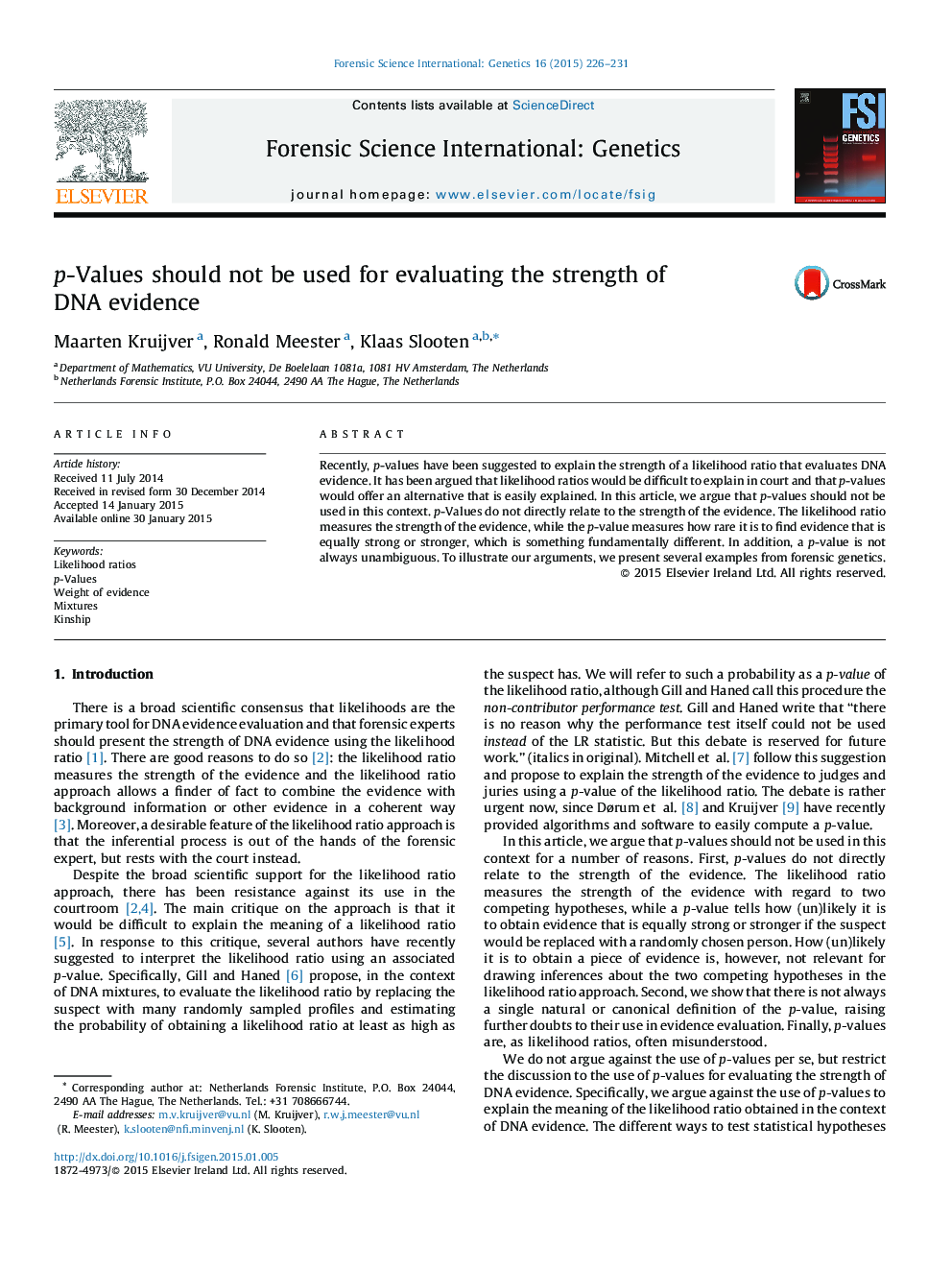| Article ID | Journal | Published Year | Pages | File Type |
|---|---|---|---|---|
| 6553800 | Forensic Science International: Genetics | 2015 | 6 Pages |
Abstract
Recently, p-values have been suggested to explain the strength of a likelihood ratio that evaluates DNA evidence. It has been argued that likelihood ratios would be difficult to explain in court and that p-values would offer an alternative that is easily explained. In this article, we argue that p-values should not be used in this context. p-Values do not directly relate to the strength of the evidence. The likelihood ratio measures the strength of the evidence, while the p-value measures how rare it is to find evidence that is equally strong or stronger, which is something fundamentally different. In addition, a p-value is not always unambiguous. To illustrate our arguments, we present several examples from forensic genetics.
Related Topics
Life Sciences
Biochemistry, Genetics and Molecular Biology
Genetics
Authors
Maarten Kruijver, Ronald Meester, Klaas Slooten,
